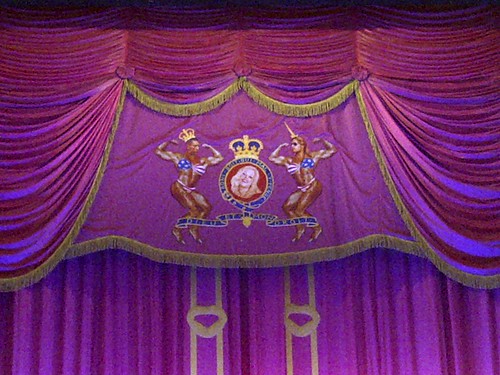 I went to the Royal Opera House saturday night to see Anna Nicole, the opera on the life and death of former playboy model Anna Nicole Smith. The play was actually really nice, the opera house is amazing but I was struck most by the smart ideas that were used to craft Anna Nicole and make it worth talking about.
I went to the Royal Opera House saturday night to see Anna Nicole, the opera on the life and death of former playboy model Anna Nicole Smith. The play was actually really nice, the opera house is amazing but I was struck most by the smart ideas that were used to craft Anna Nicole and make it worth talking about.
It currently is the most talked about opera on Facebook and Twitter and the opera dominates the search results in Google when you look for an opera in London.
Of course, Anna Nicole Smith (the brilliant Eva-Maria Westbroek by the way) is a bit controversial, especially for an opera. Critics are really skeptic (or enthusiastic) and that drives conversations.
But it would be to easy to overlook even smarter elements within the performance:
- The basis of the play is an engaging story. The structure of the play is simple, but appealing: the rise and rise and fall of a celebrity. The history itself is interesting: how a young girl from the countryside became one of the most famous people in the states and couldn’t deal with the fame.
- Identification is one of the drivers of conversations (see our CRUSH model on that). There are some smart elements as well to drive identification with the performance: subjects like the relationship between a mother and her son, doubts about beauty.
- On an even lower level, there many references to popular culture, musicals and pop songs in the lyrics, which make it even easier to indentify with the musical.
- The director was smart enough to make the opera extremely accessible: there is a banner subtiteling the show, the lyrics are in English, the story is easy and easily understood.
- The opera is full of stuff worth sharing: some great soundbites, some smart moments (young girl flashing breasts, the opening scene after the break with a huge bed).
- Also execution is smart: some really smart and creative copywriting combined with strong visual effects, lots of vibrant colors.
Let’s learn from this. Use an engaging story, identification, accessibility, references and execution to drive conversations. If it works for opera, it most definately will work for your next advertising campaign.